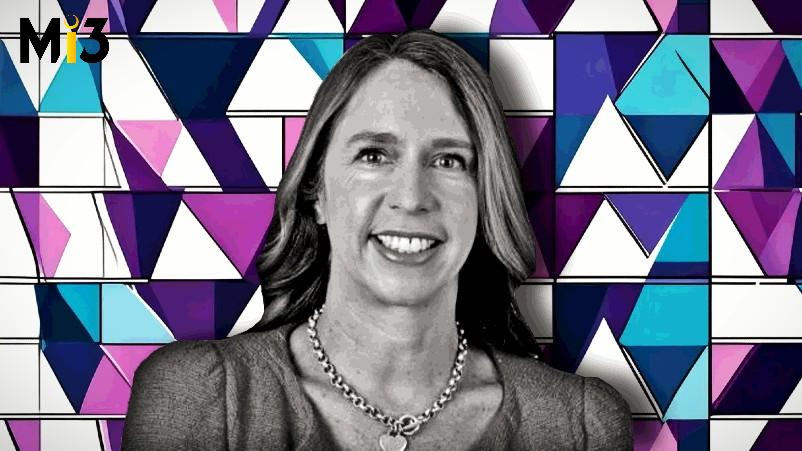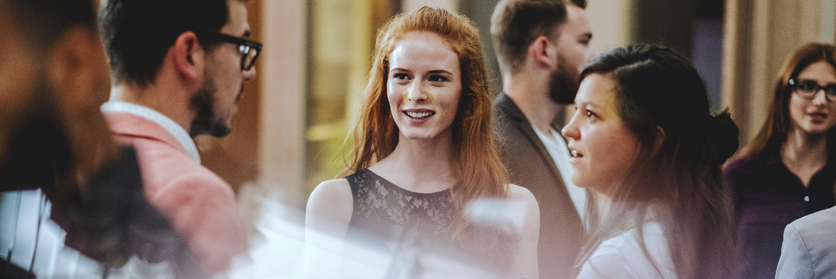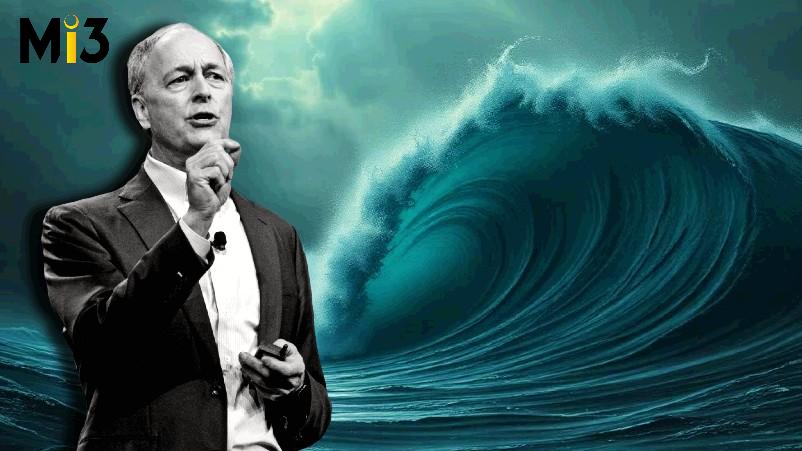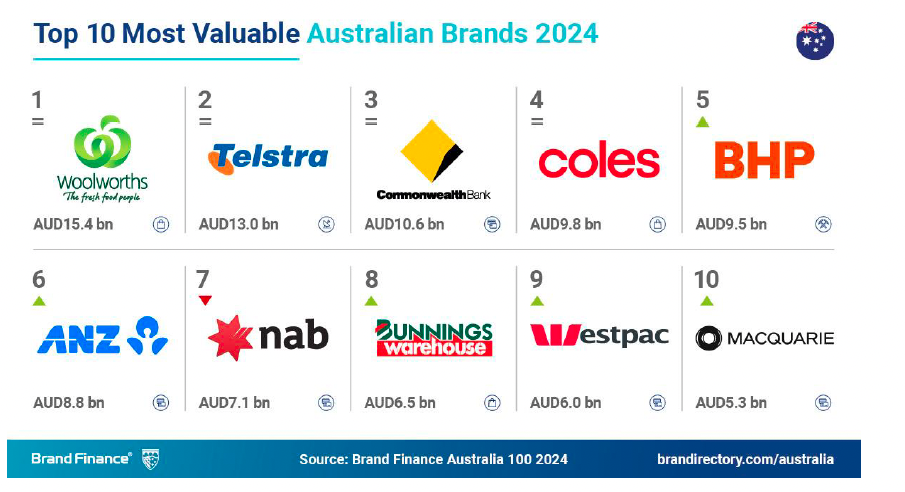‘It’s the only way I learnt to add value at the ABC (and made people want to talk to a marketer)’: Audience and marketing chief Leisa Bacon on proving naysayers wrong – and what’s next

What you need to know:
- After 10 years as the inaugural director of audiences and marketing at the Australian Broadcasting Corporation, Leisa Bacon has pulled up stumps and will exit on 6 September.
- Her immediate next step is to take a break, recognition of the nature of being a marketing and audience chief in today’s relentless media landscape.
- Having been told bringing audiences and marketing together into one united front wouldn’t work, Bacon says she’s proud of not only pulling it together, but making it sustainable. Per Bacon: “We now have some incredible leaders and teams across different areas such as audience data and insight, social strategy, our internal media agency, media strategy team – these just didn’t exist before. I feel it’s a very good example that organisations can work differently and successfully – and that you need to drive a scale of change to enable that.”
- Harnessing the power of the ABC masterbrand has been a crucial cog in the machine. “The power isn’t the shows, or all the different products and services, it’s that they come together and create the ABC… that’s where you get scale and impact”, Bacon says.
- Bacon acknowledges she’s not had the same commercial pressures as other traditional FTA broadcasters, but sees the audience-first approach as critical to overcoming media fragmentation and challenges around proving the value of media platforms to the market.
- Bacon also agrees the media industry as a whole remains too complicated and needs to adopt more unified measurement approaches, using audiences over channel-based reach as a guide.
Start with the audience, never the job: Who are they, where do we need to reach them, what platforms are they on? How are they consuming the content? It’s the only way I learnt to add value to the ABC, because everyone does want to grow audiences. But they don’t necessarily want to talk to a marketer.
Leisa Bacon is the third high-profile media marketing chief to head for the exit in six weeks, following last month’s sudden departures of Mel Hopkins from Seven and Nikki Clarkson from Southern Cross Austereo. But while her two CMOs counterparts were casualties of commercial bite, Bacon has chosen her own time to part company with Australia’s public broadcaster, hitting her 10-year milestone before opting to take a well-earned break from the unrelenting media meat grinder.
As reported on Friday, Bacon will wrap up at the ABC on 6 September, with head of marketing, Karen Madden, stepping in as interim director of audiences while the recruitment process gets underway for a permanent replacement.
“I’ve done my 10 years. Media is a challenging industry, you work really hard and it’s 24/7. I never thought I’d stay 10 years, but I’ve loved the job,” Bacon tells Mi3.
Now Bacon needs a break – and with a long service payment in her pocket, she wants to use it before taking her next professional step. While recruiters tell Mi3 it’s a tough jobs market for CMOs and senior marketers out there, Bacon’s not sweating. “I’m good with that”, she says.
“I’m going to do the right thing for me and have a break. I’m sure I’ll jump into something else but I’ll definitely have a holiday first and I’m not compromising that.”
Smart move. Many CMOs, even when tapped for other jobs, don’t have headspace to even consider them. (A few months back, Hourigan International partner and former Hipages customer chief, Stuart Tucker, argued the CMO job today is so big, it inevitably leads to burnout – and he warned that a swathe of the senior cohort are starting to eye the exit ramp.)
“I’m a 100 per cent person, and if I’m in my job, I’m 100 per cent. It’s therefore really hard to go evaluate X, Y, Z opportunity,” Bacon says. Nevertheless, she agrees the ‘bigness’ of her remit is a factor – not just because of exploding marketing and audience/customer pressures, but also the non-stop nature of the media industry itself. “I’ve never done this in the past; I’ve gone from one job to another. But I don’t think that’s always sustainable – certainly not when it’s a high-pressure media job.
“Things are happening a lot more out of hours, on weekends that impact you as a leadership team member, or because you’re helping audiences to navigate through that changes. You have to think about getting the right stories and changes to the right people. It’s challenging.”
Centralising audience and marketing
Ten years ago, Bacon joined the ABC with the task of centralising marketing and audiences. She came with hefty marketing and brand credentials in the corporate space, including brand management at Procter & Gamble, product management at Parmalat, marketing at Boots Healthcare, and new business and marketing at The Coca-Cola Company. Bacon also worked as director of marketing for the Queensland Performance Arts Centre for two-and-a-half years, earning her cultural industry stripes.
“Everyone told me it wouldn’t work when I started and there were a lot of detractors for that even as a strategy. So the number one thing I’m proud of is not only did I pull it together, I made it work and it’s been sustained,” Bacon says. “We now have some incredible leaders and teams across different areas such as audience data and insight, social strategy, our internal media agency, media strategy team – these just didn’t exist before. I feel it’s a very good example that organisations can work differently and successfully. And that you need to drive a scale of change to enable that.”
A big step forward was ABC’s first Content Plan (2020-2022) – a multiyear framework setting out the ABC’s creative ambitions, and bringing together all content teams for the first time to articulate and deliver a united content mix mapped against audience needs and opportunities.
Another initiative Bacon kicked off in 2019 was ABC’s personalised audience experience (PAX), a partnership between the audience and technology teams. Key objectives included acquiring new audiences through optimising content discovery, linking communications on and off platform, better retaining audiences by serving more relevant content in the right context, and re-engaging lapsed audiences to grow product usage. These two initiatives were part of the submission that saw Bacon recognised as Australia’s top CMO in the former CMO50 program in 2020.
A further must has been recognising ABC as a powerful master brand. “To do that and harness the power of the ABC brand in such a fragmented media ecosystem, you have to think of it in that masterbrand strategy way, pulling it together and recognising how all the little things you do contribute back to that,” Bacon continues.
“The power isn’t the shows, or all the different products and services, it’s that they come together and create the ABC. I don’t think the organisation appreciated that’s where the true value of the ABC lies.
“And when you bring it all together, you can then take it back out. You then have the power of scale and impact because you’re leveraging your entire ecosystem, channels and journeys. The media industry more broadly wasn’t thinking like that and the ABC certainly wasn’t back then. We’ve demonstrated we can do that incredibly successfully and it’s how we get scale and impact. Now, we can do things and literally reach 50-60 per cent of Australians, because we can leverage all channels to achieve it.”
The power isn’t the shows, or all the different products and services, it’s that they come together and create the ABC. I don’t think the organisation appreciated that’s where the true value of the ABC lies. And when you bring it all together, you can then take it back out. You then have the power of scale and impact because you’re leveraging your entire ecosystem, channels and journeys. The media industry more broadly wasn’t thinking like that – and the ABC certainly wasn’t back then.
The fragmentation problem
A fragmented media landscape makes internal unity all the more critical – yet it’s something Australia’s major broadcasters continue to struggle with, according to comments made by Nine CMO, Liana Dubois, and Mel Hopkins at the recent Mutinex Marketers and Money event. Talking on the subject of total TV versus digital platforms, the pair agreed TV still has too many issues with terminology and ROI, compounded by ongoing challenges selling the total TV brand.
While she’s not keen to get drawn into comparisons, Bacon agrees the media industry as a whole remains too complicated and needs to adopt more unified measurement approaches, as well as a stronger flip towards total audiences over channel-based reach. It’s no coincidence Bacon’s job title and focus has been on ‘audience’ and delivering a customer-led play on media.
“I ultimately think if everyone was more customer-focused, you’d get a different outcome. If you’re a media company, it might be the agencies as well as your end consumer. But you have to be thinking more holistically than about the one thing you do if we’re to move the industry forward,” Bacon comments. “If you’re not moving your industry forward, your industry is getting eaten alive.
“What I’m proud of doing at the ABC is starting the journey of thinking differently, making it all about the audience and shaping the way we do things to best reach that audience wherever they are, whatever they’re doing. The industry needs to do that for customers – being the media agencies and brand owners – and they also need to do it for end consumers.”
Unity through consistency
The hardest task for Bacon unsurprisingly has been change management and culture. Up until recently, ABC still had a TV division, radio division and news division. Today, there’s still a news division and a content division, which brings the TV studio and radio together; then separately there’s a digital products team.
“My job was to get everyone thinking whole of ABC. Now that’s a challenge when your organisation is full of divisions. That’s always the challenge when you’re looking at change: How you set up that broader goal of how to make it less about the organisation and more about the audience,” she says.
“It’s especially the case when you don’t have a rewards structure that reinforces that. We are a public broadcaster – we’re not living on our bonuses. You need to help understand the thing you do, and the content you make, will be better and more able to reach more audiences if we think about that differently. Initially, it’s a harder story to tell and it takes time and a process of change.”
Bacon says she’s constantly made a point in every conversation of discussing audiences, regardless of whether it’s with the programming or news teams.
“Start with the audience, never the job: Who are they, where do we need to reach them, what platforms are they on? How are they consuming the content? It’s the only way I learnt to add value to the ABC, because everyone does want to grow audiences. But they don’t necessarily want to talk to a marketer,” she says.
Rethinking measures of success
As a result, Bacon does think differently about measuring marketing’s impact in 2024. “I completely understand many of my media colleagues are governed by revenue, which presents a whole lot of different challenges I haven’t had to deal with,” she says.
“I’ve been governed by doing the right thing by our audiences and making sure we stay as relevant as possible for them. But yes, you need a common goal, to be unified around that and to speak a language everyone can buy into. That in our organisation is audience; in many others I’d assume it’s the customer. But it’s not a marketing conversation.”
That thinking extends to how Bacon has balanced the short versus long-term battle as she’s worked to a weekly performance cadence.
“You have to make sure those weekly outcomes are all contributing towards longer-term outcomes as well. In many ways I don’t separate brand from content or more tactical communications as much as others do. You have to do both,” Bacon says. “Really great work can contribute to both areas – yes, there are different times you do need to invest in brand, to grow awareness or trial. But in a content-driven organisation you can often do that with content: A lot of your activity can drive both outcomes. I do think that’s important – your funds are limited, you have to be efficient and work every single dollar as hard as possible.”
What’s helping marketers balance the short and long more successfully – and demonstrate their worth – has been the tools at their disposal. Like many, Bacon has been a convert to marketing mix modelling, bringing on Mutinex’s platform to better link marketing spend directly to business and audience outcomes. (Head of marketing Karen Madden used the MMM platform at her previous gig as CMO at Taronga Zoo.)
“Historically I’ve worked for very strong businesses who have invested in this over the years to demonstrate your spending drives outcomes. But we definitely didn’t have those systems or processes when I started at the ABC. So it was much harder to justify spending money, particularly when we had a very strong owned media and quite strong earned ecosystem – publicity and social channels. Paid media in a big organisation like the ABC is actually the smaller of the three circles,” she says.
“Paid was really how do we talk to the people who aren’t coming to us, or aren’t going to see the media we’re putting out there. You could be quite targeted with that, you just had to demonstrate that was incremental audience for the ABC. The challenge with fragmentation of media is that the incremental audience is growing. Because you have less people coming to you each week just by way of changes to the media market; and you have less impact with traditional publicity and socials. Your paid has to work harder, therefore you need to make sure it’s delivering on what you want it to do and it’s incredibly efficient.”
As for those next steps, Bacon is hoping for something broader in the customer space and an organisation that appreciates thinking differently.
“In some ways, when it’s tough things become more interesting as they need people who think about growth, people to come in and think about customers differently. Right now, everyone needs people interested in data, opportunities with AI and where markets are going – all the stuff I love. I look at the market right now and think wow, there is a lot of opportunity for people who want to do things differently,” she says.
Spending 10 years in a job she’s loved, meanwhile, has been a privilege. “For anyone in marketing, your job is to meet the needs of the audience / customer. It’s incredibly rewarding when you do that, whatever industry you’re in. That puts us in a really privileged position,” Bacon adds.
“We are talking to customers and audiences, seeing the impact of what we do. I love that we can see our work out there.”





